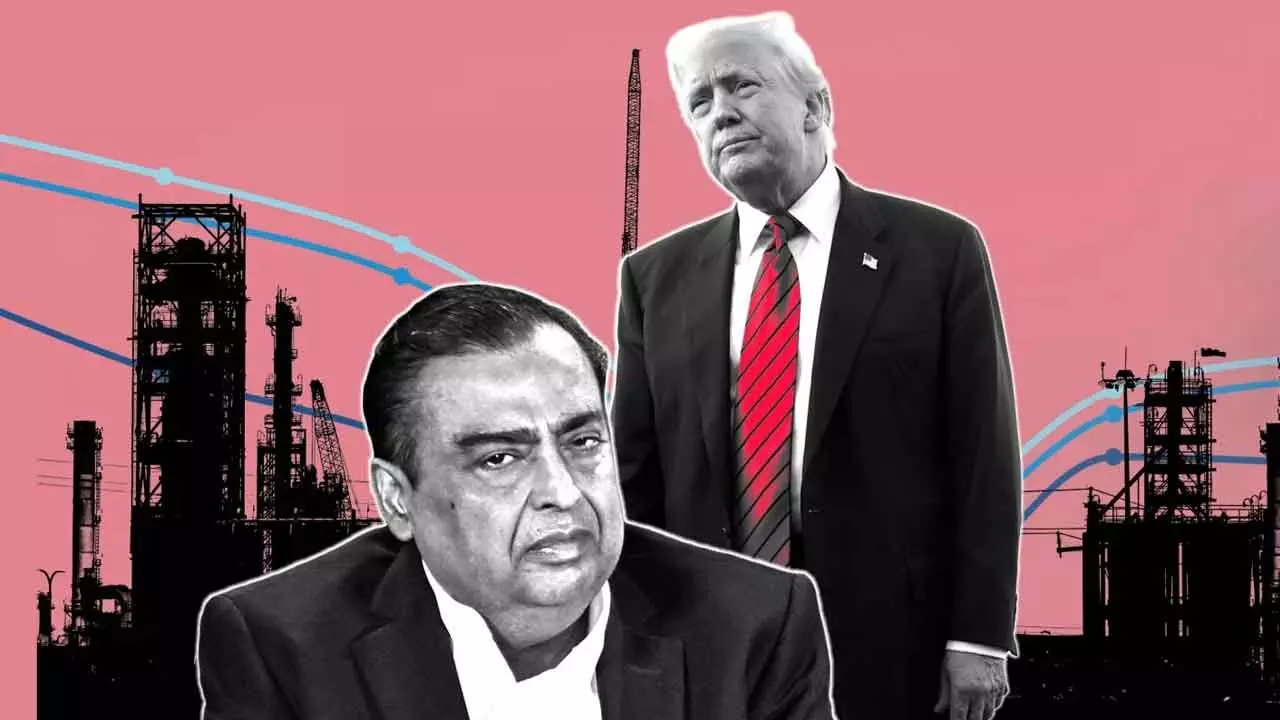Trump’s 25% Tariff Targets India’s Russian Oil Imports: Mukesh Ambani’s Reliance in Spotlight
Mukesh Ambani’s Reliance faces scrutiny as US tariffs target India’s Russian crude boom and EU sanctions loom.
image for illustrative purpose

Washington has slapped a 25% tariff on India’s Russian oil imports, placing the country among the highest-tier tariffed nations yet—at the center of US President Donald Trump’s push to punish Moscow’s allies.
The move follows a dramatic rise in Russian crude shipments to Reliance Industries (RIL), led by Mukesh Ambani, Asia’s richest man (net worth $100+ billion). Reliance’s Jamnagar refinery, the world’s largest, has shifted from sourcing just 3% of crude from Russia in 2021 to nearly 50% in 2025, according to the Centre for Research on Energy and Clean Air (CREA).
Tariffs and accusations
Trump accused India of “fueling Russia’s war in Ukraine,” posting on Truth Social (July 30) that New Delhi had become one of Russia’s top buyers of energy—“ALL THINGS NOT GOOD!” US Treasury Secretary Scott Bessent added that “some of India’s richest families” were benefiting from these imports.
Reliance leads the charge
Between January and July 2025, Reliance imported 18.3 million tonnes of Russian crude—worth $8.7 billion—up 64% year-on-year. CREA data shows these imports are already just 12% below all of 2024’s total, underscoring how quickly Russian oil has become integral to Jamnagar operations.
RIL’s exports tell another story:
♦ $85.9 billion in refined products shipped globally since Feb 2023.
♦ 42% (€36 billion) went to nations sanctioning Russia.
♦ $19.7 billion to the EU, and $6.3 billion to the US (about $2.3 billion processed from Russian crude).
The US, in fact, ranks fourth by value and first by volume for products sourced from Jamnagar, importing 8.4 million tonnes since 2023, including blending components (64%), petrol (14%), and fuel oils (13%).
Price cap loopholes and shadow fleets
The $60 price cap on Russian oil, set in Feb 2023 to limit Moscow’s revenue, has been largely ineffective. Weak enforcement and a “shadow fleet” of tankers allowed Russia to sell above the cap—CREA estimates 83% of shipments used these vessels in Jan 2025, dropping to 59% in June.
Nayara Energy follows suit
Nayara Energy, majority-owned by Russia’s Rosneft, imports 66% of its crude from Russia, though its total volumes are just one-third of Reliance’s intake.
India’s strategic calculus
Experts say this trade is not simply about corporate profit:
♦ Rachel Ziemba, senior fellow at CNAS, notes that cheaper Russian oil helps India cut its current account deficit while signaling non-alignment in global geopolitics.
♦ Ajay Srivastava of GTRI called Trump’s tariff “a total sham,” pointing out that China—Russia’s largest crude buyer—faces no similar penalty.
India has long prized strategic independence, refusing to formally align with either Washington or Moscow, even during the Cold War.
The road ahead: EU bans, new contracts
The EU will ban refined petroleum processed from Russian crude starting January 2026. CREA analyst Vaibhav Raghunandan warns this “significant policy change” could hit Reliance hard—over half of its jet fuel exports currently go to Europe.
Still, Reliance signed a 10-year crude supply deal with Rosneft in December, raising questions over how future sanctions will interact with long-term contracts.

